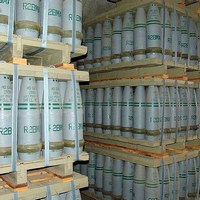The recent review conference of the Chemical Weapons Convention (CWC), which took place April 8-19, addressed many important issues, including the need to completely eliminate the Russian and U.S. Cold War-era arsenals; states of proliferation concern that have refused to join the CWC; suspected chemical weapons use in Syria; tensions over technology-sharing and export controls; and the growing financial resource constraints on the Organization for the Prohibition of Chemical Weapons (OPCW), which has the lead responsibility for administering and verifying the convention.
But overshadowing all these issues are revolutionary and interrelated changes in chemistry, biology and nano and information technologies. Some of their implications are potentially positive, such as the creation of new medicines, diagnostics, sensors and other forms of protection against toxic chemicals, which could lead to improvements in antibodies, pharmaceuticals and detection technologies. In addition, nanotechnologies could lead to less bulky and cumbersome personnel-protection systems, while also making it easier to install multiple sensors on a single detection system.
Unfortunately, however, some of the likely results of these scientific and technological developments could have extremely negative repercussions for the CWC. Many concerns focus on the potential challenges to the OPCW inspection regime, which relies heavily on monitoring the trade and production of certain chemicals that in the past were used to make weapons. Debate continues over what changes the OPCW needs to make to its inspection procedures to address these ongoing changes in chemistry, which among other things are increasing the number of sophisticated manufacturing facilities that should be monitored to prevent their misapplication for producing chemical weapons.

